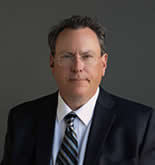articles
"Work Related Vehicle Accidents- The Overlooked Hazard At Work."
By: Greg Gerganoff
Tel: 303-330-4616
Email Mr. Gerganoff
View Profile on Experts.com.
Use fall protection; Use trench boxes when excavating; Lock out Tag Out any time repair or maintenance of equipment involving stored energy is performed; Slips, Trips and Falls are one of the most expensive types of injury. For my sixteen years in safety these safety hazards were always in the forefront of safety concerns for businesses and safety professionals. Guess what? Work related road way crashes is the number one serious/fatal injury cause for U.S. workers. OSHA recognizes this. CDC/NIOSH has generated a white paper studying this fact. Who knew? So here is some info on this number one safety hazard in the US work place.
Solutions to a problem are easier to implement once the size and causes are known, so here are some facts.
- Between 1992 to 2000 there were 11,952 work related road crash fatalities according to NIOSH.
- In 2011 there were 450,000 oil and gas workers.
- From 2003 to 2010 the oil and gas industry sustained 823 fatal injuries. (Seven times greater than overall rate of all other US industries.)
- Work related road way crashes was the leading cause of death to American workers.
- Oil and gas workers are 8.5 times more likely to sustain fatal injuries from motor vehicle accidents than any other work segment. (In Texas for example, between 2003 and 2009 1/3 of all oil field fatalities involved vehicle accidents.)
- Those working for operators, drilling contractors and well service companies face the highest risk exposure. (A perspective note here: Only workers in the transportation/warehouse industries experience higher fatality rates from roadway crashes.)
- 56% of oil and gas road way fatalities involve a single vehicle.
- More than 50% of fatalities involved a pickup truck.
- Failure of vehicle occupants to wear seat belts. 60% of fatalities due to no seatbelt used.
- There is a higher rate of fatal road crash amongst companies with 20 or fewer employees and nearly one half of these fatalities were non-collision. (Meaning, roll overs, loss of control, etc.)
What can be done?
1. Seat belts not being used contributed heavily to fatalities. Seat belts are easy to use, are common in all vehicles and have been around since the early 60's and mandatory in 1966. They take approximately 5 seconds to use. Seat belts are effective in crashes. An estimated 60% of the fatalities could have been avoided if seatbelts had been used. Interestingly the oil field has a "culture" of not using seatbelts. Time to change that mindset!
2. Fatigue. There are several factors contributing to fatigue including prolonged hours, lengthy drives, and time of day. Single vehicle crashes occur at higher rates at night. Some solutions include trying to provide a regular work schedule, taking light rest breaks (45 minute breaks after driving 4 hours). (Crash risk steadily increases after 4 hours driving; jumping to 80% higher at hours 9 and 10.)
3. Roads are a work environment unlike any other. Road conditions change with weather, traffic and construction. It is a very uncontrolled work environment. Many oil field locations are off the beaten path rarely on well paved highways and roads. Some roads to well sites can become downright slick when wet.
4. Distractions while driving include cell phones and internet equipped vehicles or any activity taking the drivers attention away from driving.
Driving is a big part of working in many industries and especially in oil and gas. Staying safe while driving is clearly critical as vehicle accidents claim the number one spot for worker injury and deaths in the U.S.
Greg Gerganoff, ASP, CSP, Esq., is an OSHA / MSHA Safety field and compliance expert with experience in the heavy construction, oil and gas, mining, pipeline, and trenching and excavation industries.
©Copyright - All Rights Reserved
DO NOT REPRODUCE WITHOUT WRITTEN PERMISSION BY AUTHOR.


